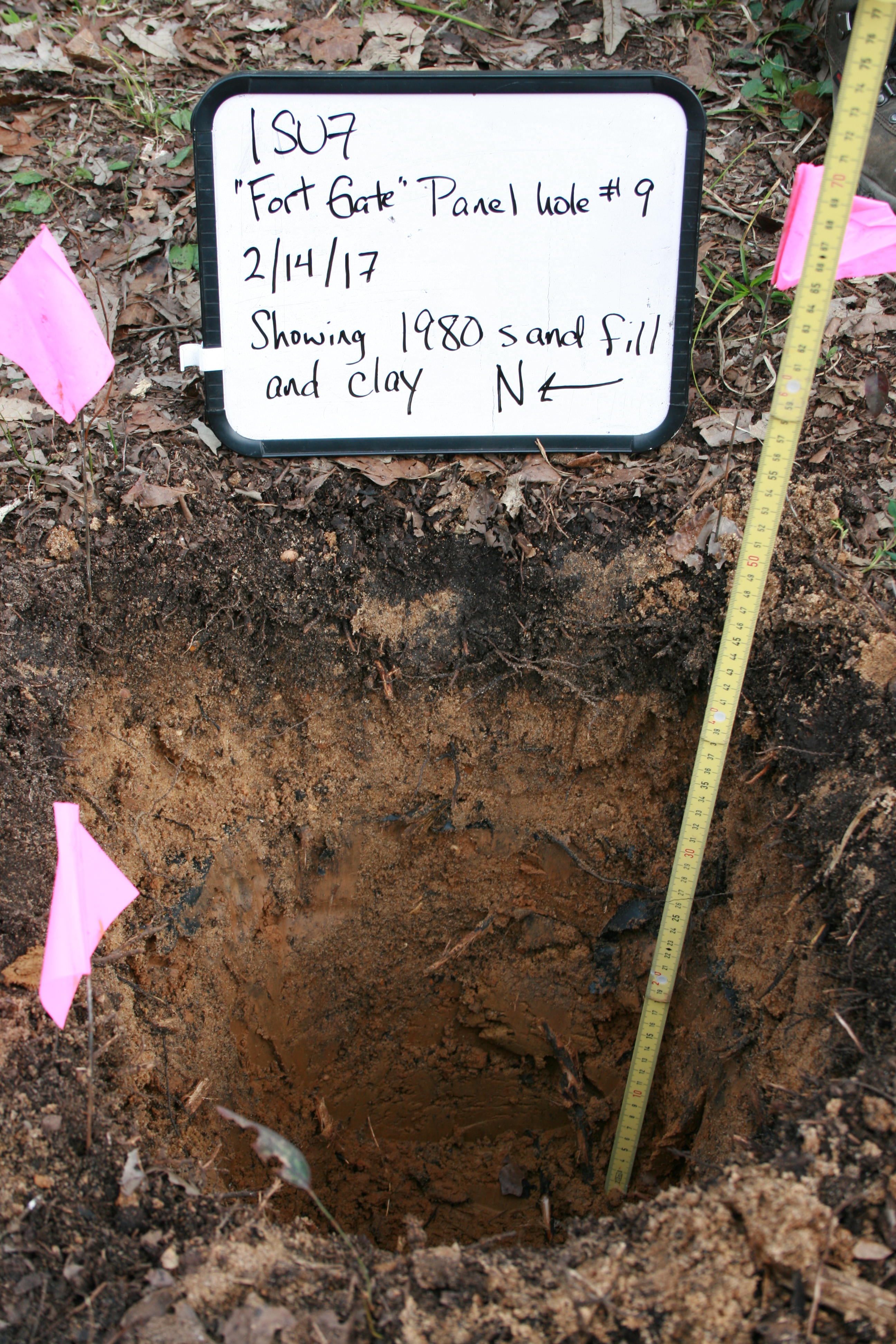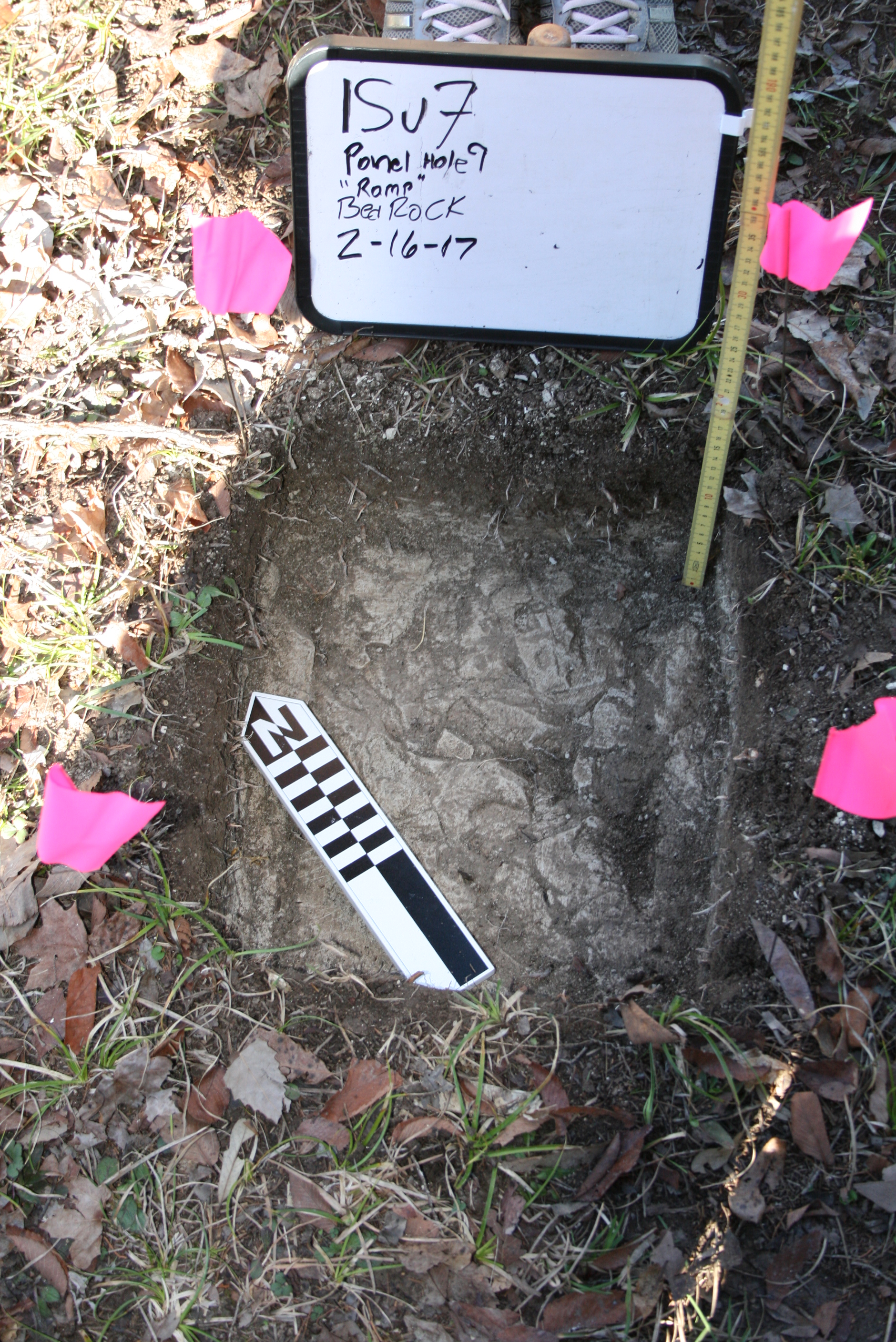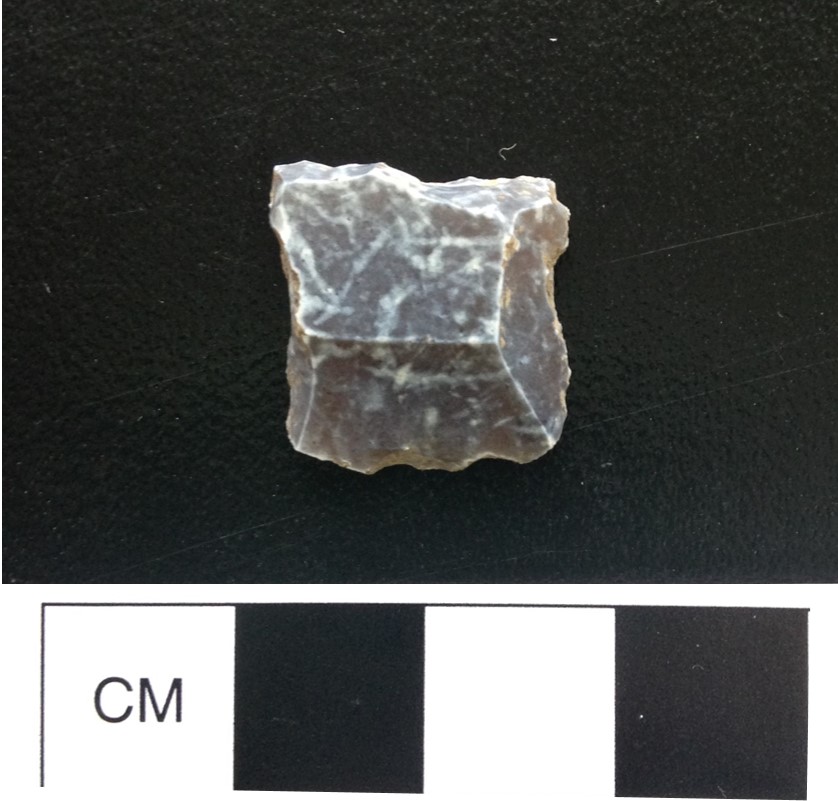by Skyler Browder
2-14-17
Today we
continued to work at a slow pace on panel holes six, seven, and eight. We are
working at a slow pace in order to make sure we preserve anything that might be
found. In both holes we found what is believed to be either back fill or
postholes of some sort, as of now we are not exactly sure what it means. In
panel hole six we finished cleaning it out and took picture to document the
hole. We take pictures of the dig sites so we are able to keep track of everything, like the strange chalk rocks that we found in all
three of the holes, to help us better understand what we are looking at. While
this was going on, we also opened two more holes for the panel signs that will explain the location of the fort's gate and the Spanish
oven. Fortunately, the 1980 dig led by Jim Parker included excavations near the gate and the Spanish oven, which means that we could put these panel holes in previously disturbed soil. Fort the
panel hole at the gate we were able to dig roughly 50 cm deep, even though it
continued to go further down. At first it was sand, which was just back fill from
the previous excavation. Lower down and beneath a layer of black plastic, almost 30 cm down, it turned to
more of a hard orange clay with sand. We think this is also back fill and stopped digging at 50 cm below the surface, which is deep enough for setting in the panel post. Fort the Spanish oven panel hole, we dug through about 30 cm of sand back fill. Beneath that was a layer of plastic. Beneath the plastic we
began seeing large pieces of chalk rubble. It could be a part of the oven, maybe an
outer wall, although it could have just been rubble from the 1980 dig. Once we encountered this chalk, we stopped and called it done. For both of the holes we documented the
depth and the back fill. No artifacts were found in
the holes.
This photo shows the back fill from the 1980 excavations. Look carefully in the profile to see the black plastic they used to cover their excavations. Beneath the plastic is orange clay.

2-16-17
Today we continued working on panel holes seven and eight; they should be done by next week. While those were being worked on, we opened up a new hole for installing the panel that explains the ramp to the river. The ramp was a difficult dig. While digging, we were not able to dig down past 13 cm. Basically it was the topsoil, and then we hit bedrock. There were no artifacts found in the hole. At panel hole seven we removed the rocks, while leaving imprints to be able to place them back down next week when Layer C is finished for that hole. They were removed to be able to level out the layer. In panel hole eight the dig continued, and towards the northwest corner, we found a collection of chalk rocks that formed a hole in the middle. The hole looks like it was a place for maybe a post. Speculation at the time is either a fence post or to support a post that was used to protect wood from the weather. In the hole, there was a small seed found. While walking around the outside of the fort, Dr. Meredith found a grey pistol gunflint in the Spanish moat. It was most likely washed into that area.
As you can see below, there's not much topsoil near the edge of the cliff!

